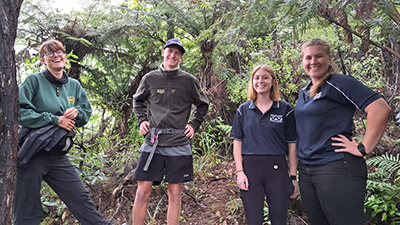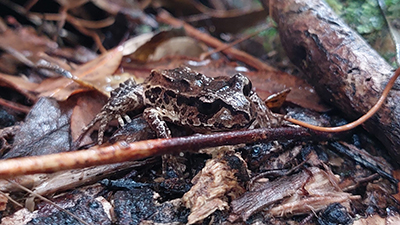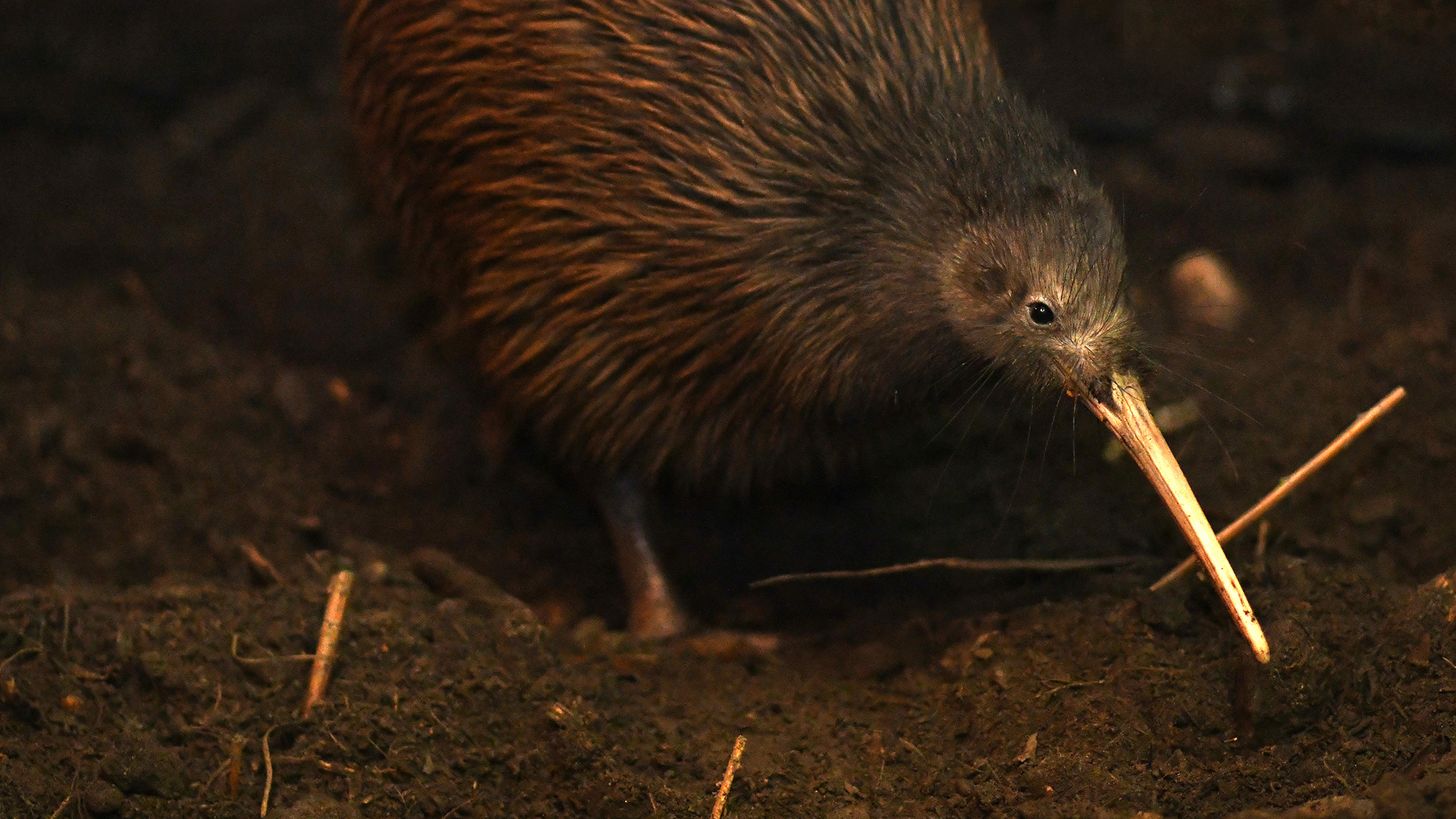
Saskia Wagner and Luke McCauly, from Driving Creek Conservation Park, show off their trapping network to Waikato Regional Council biodiversity officers Renee Denby and Kate Pepper.
Five years ago, Driving Creek Conservation Park had just nine traps and no kiwi.
Now, there are about 435 traps across the 28-hectare Coromandel park and neighbouring private and public conservation land, and at least three kiwi pairs resident or regularly visiting.
“After building up a trapping network over two years, we’d noticed a few kiwi probe holes and then also found a kiwi feather, so we were hopeful that kiwi had moved in,” says Conservation Team Leader Saskia Wagner.
“We set up a trail camera and a couple of weeks later had had images of kiwi in the conservation park.”

Archey’s frogs have also been discovered on the property.
That was the year the management team successfully applied for $11,000 in funding from Waikato Regional Council’s Environmental Initiatives Fund to keep expanding the trapping network to cover more neighbouring land.
“Our property is quite small,” explains Conservation Field Ranger Luke McCauly, “so by collaborating with neighbours and other pest control groups we can really optimise the benefits of predator control to the biodiversity of this area and especially provide a safe environment for kiwi.”
The conservation park, which is admistered by the Driving Creek Railway Charitiable Trust, is part of a unique not-for-profit business that combines pottery, tourist experiences and conservation work.
During and after the COVID-19 lockdowns, the business suffered a huge loss in tourist visits. This meant there were no available funds to buy the materials to expand the trapping network.
“The council’s funding allowed us to continue to grow our trapping project, with the trust funding the staff to maintain the traps, monitor pests and keep the project sustainable long-term,” says Conservation Manager Kate James.
One of the purposes of the charitable trust is to protect the local environment – it was the wish of the late New Zealand ceramic artist and environmentalist Barry Brickell, who owned the property and died in 2016.
Barry had bought the property in 1973 and called it an “ecological plunder”.
In his book, Rails toward the sky, he lamented how tragic it is was there were no kiwi in the local bush due to introduced predators like feral cats, stoats, ferrets and dogs.
The land was scarred from years of logging, goldmining and farming, although the pine trees were useful for firing pots and the soil had a lot of clay.
Barry built a railway to transport the wood and clay.
He also planted about 30,000 native trees, established a QEII covenant to safeguard the regenerating forest in perpetuity, and built a 1.6-hectare predator-free fenced wildlife sanctuary.
Today, the conservation team not only hear and see kiwi on the property but have also discovered Archey’s and Hochstetter’s frogs.
“We strive to keep working on Barry’s vision for a healthy and thriving local environment,” says Saskia.
Driving Creek is open to visitors who can take a rail tour or a zipline tour through the native forest while learning about the history of Driving Creek and the conservation efforts of the past and present.
The team works closely with conservation groups, such as Moehau Environment Group, and holds free conservation events, including educational workshops for locals and a biannual Pestival.
“By working with others, our massive long-term goal is having the whole Coromandel catchment protected,” says Kate.

